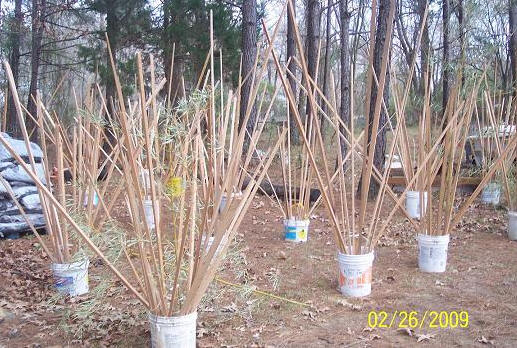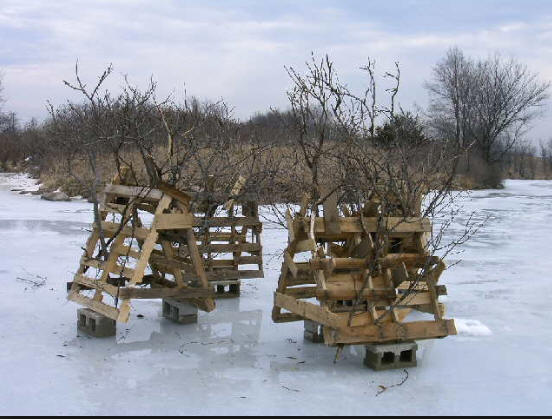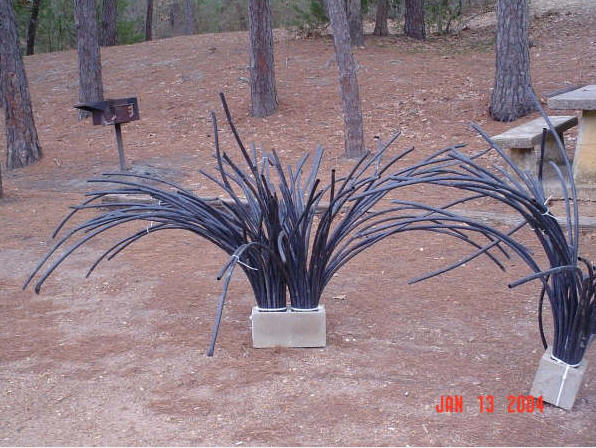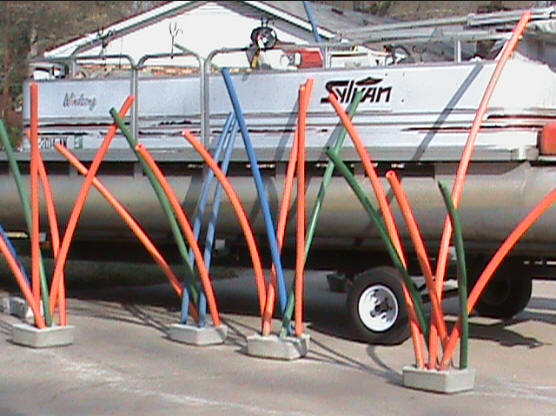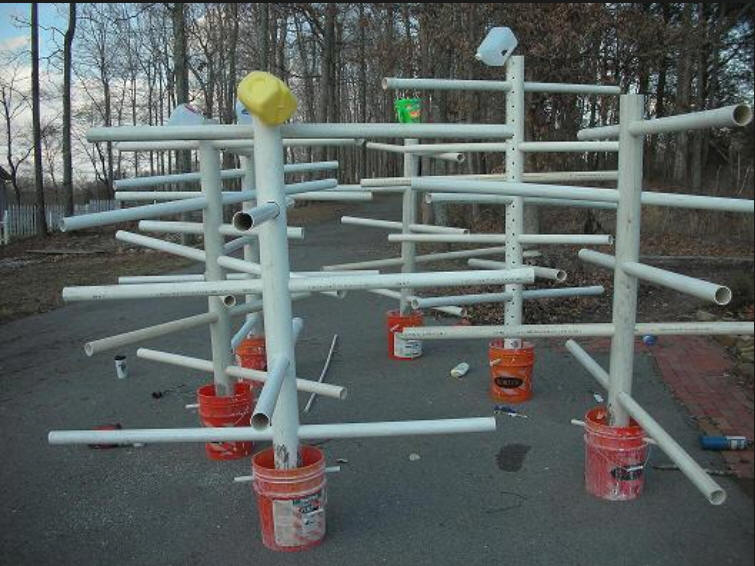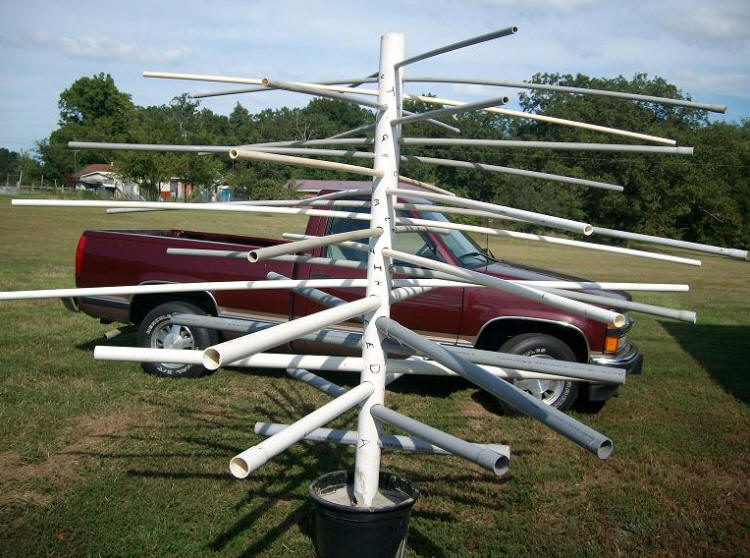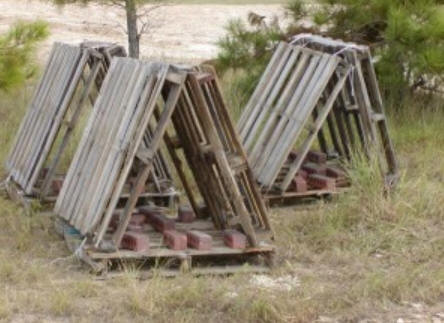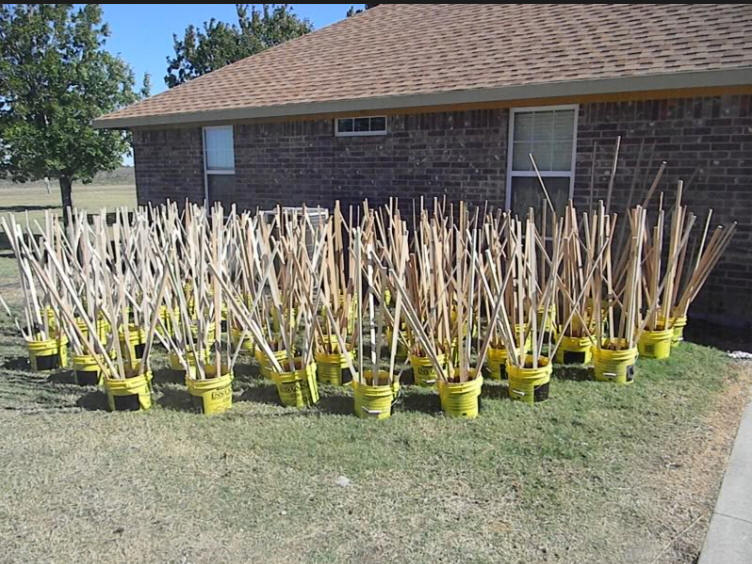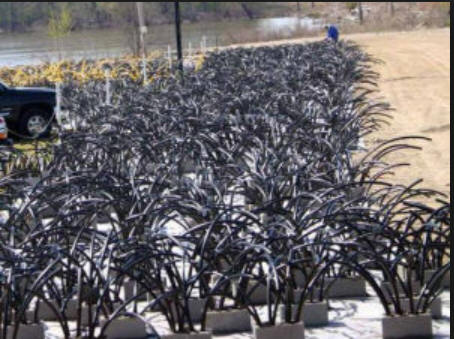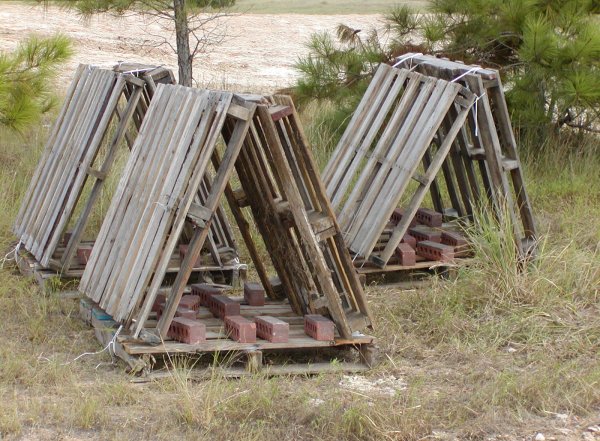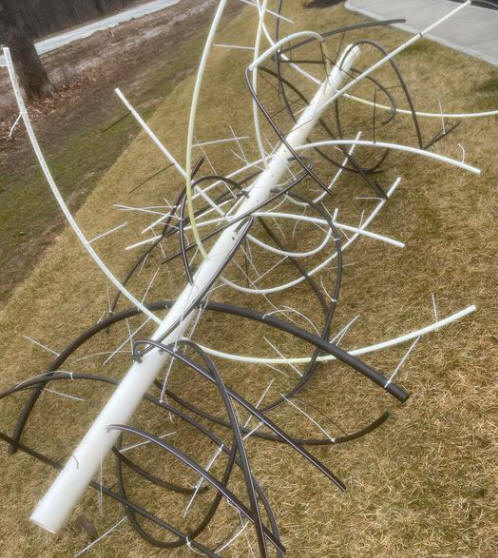
June 26, 2017


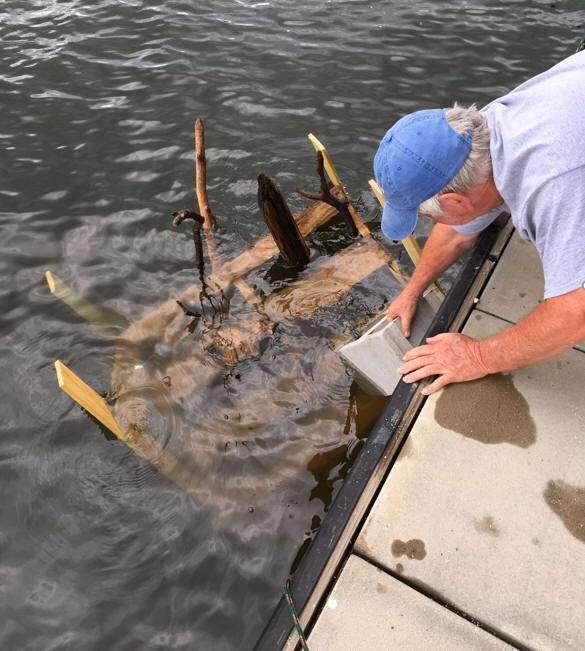
______________________________
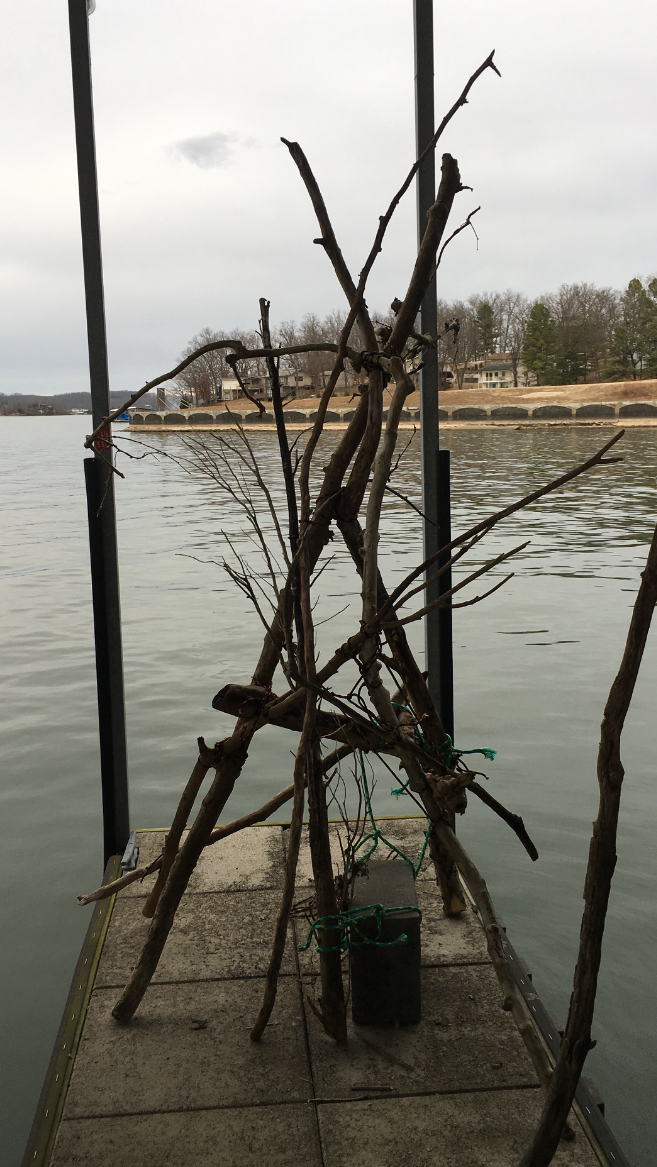
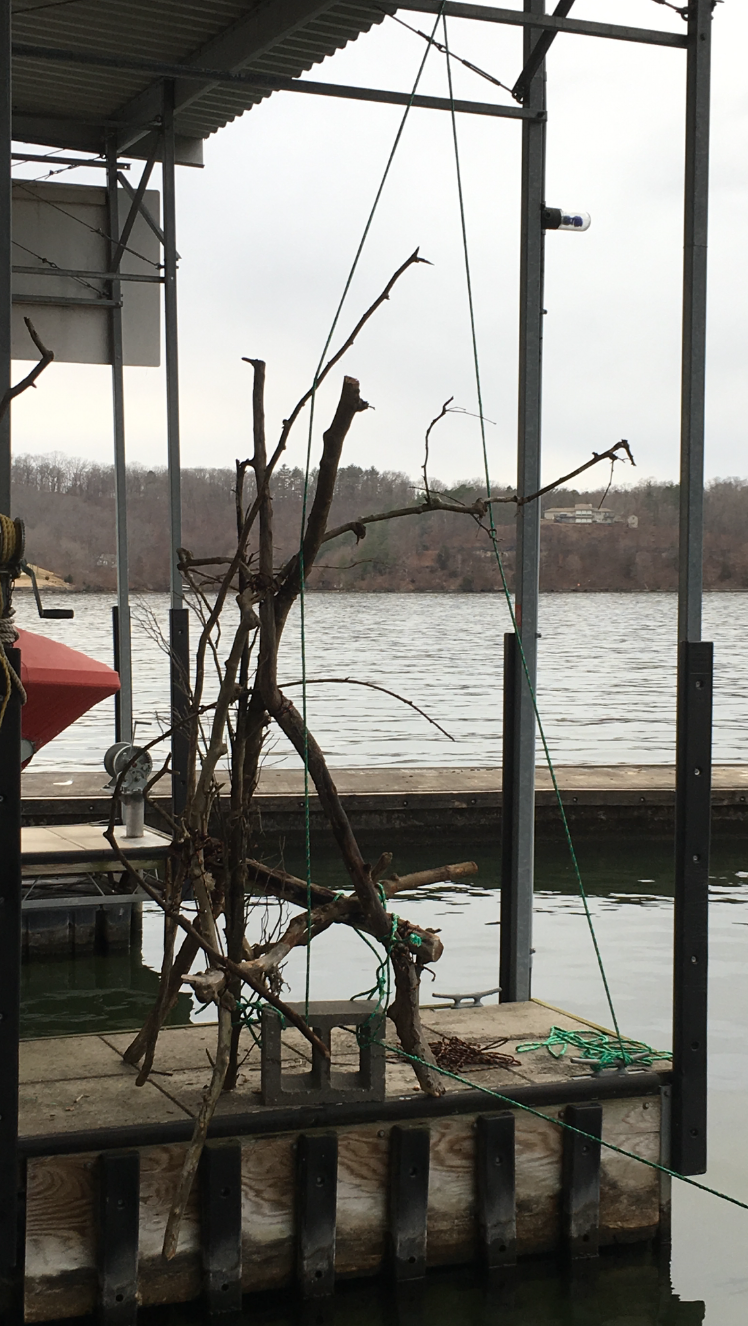
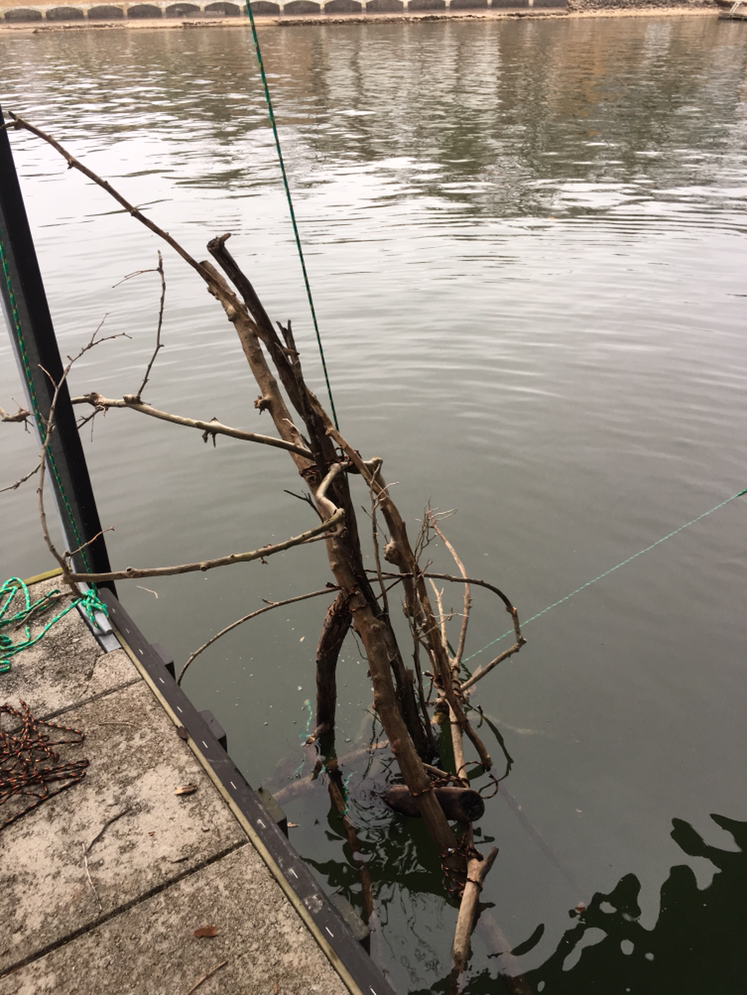
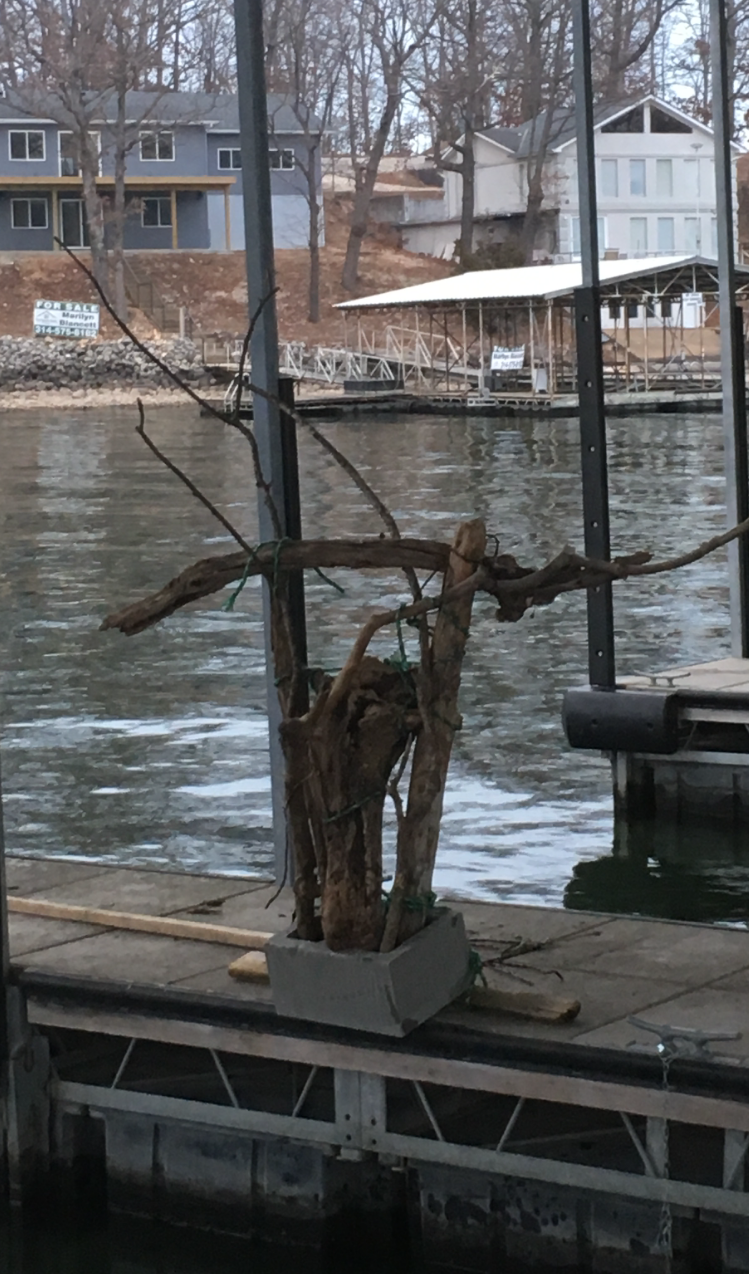
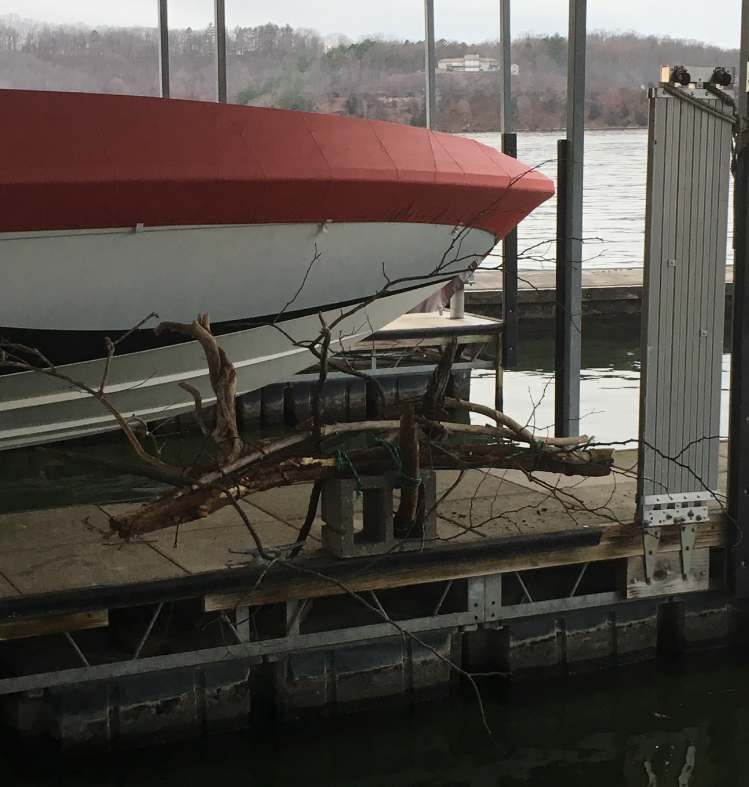
.jpg)
The idea of PVC pipe for cover is that hooks do not hang up bad on them like they do on real tree branches.
You just take a piece of 2" diameter PVC pipe about two feet long and then drill holes all the way through for a smaller pipe such as 1/2" PVC.
Cut pieces of 1/2" PVC and pass it through the holes making branches like a tree. Do not cap off any of the PVC pipe ends because that will trap air in the pipes.
Then take the PVC tree and stick into a plastic one gallon milk jug filled with sand.
You will have to cut out the top of the milk jug to fit the pipe. It helps to have a 4 1/2" long piece of the 1/2" PVC branch at the very bottom of the tree to bury in the jug with the sand.
Sink the whole tree in a place where you want to start a crappie bed.
It helps to bait minnows to the new bed with something such as cotton seed meal so the crappie will have minnows as a food source to help attract them to the new bed.
I would put a few weighted down cotton seed meal bags made from old pantyhose to attract minnows for the crappie.
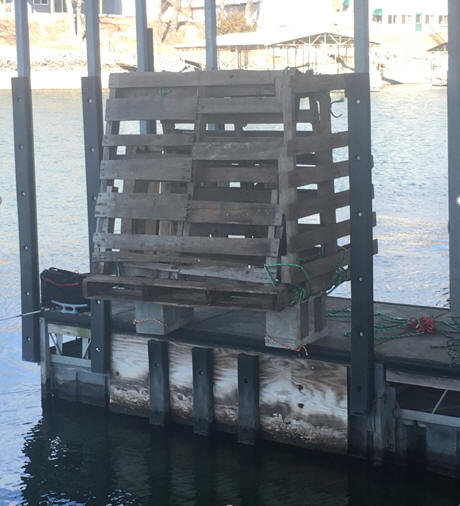
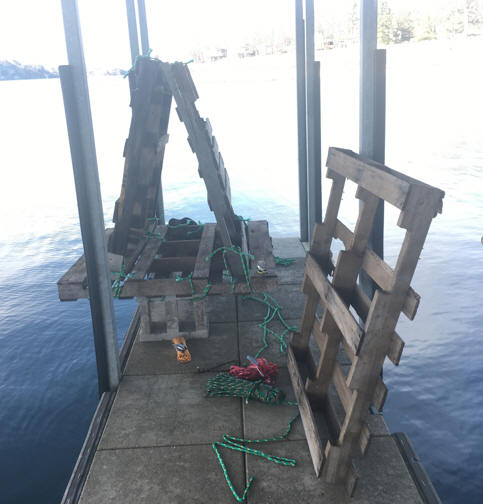
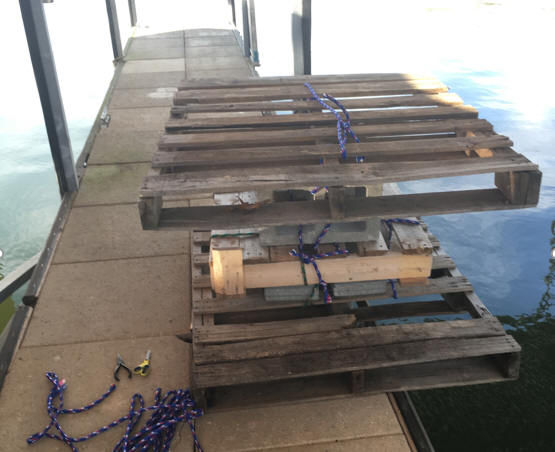
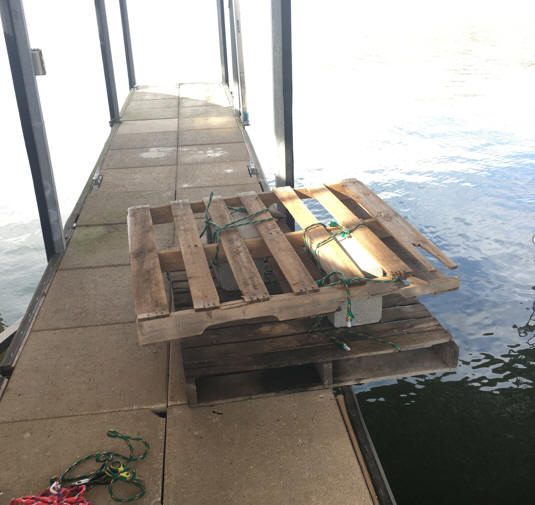
May 13, 2017
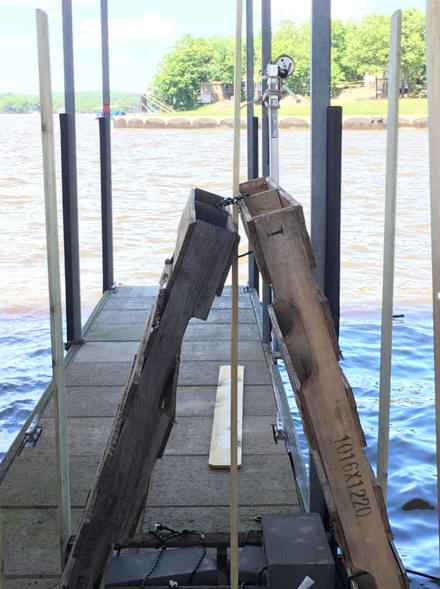
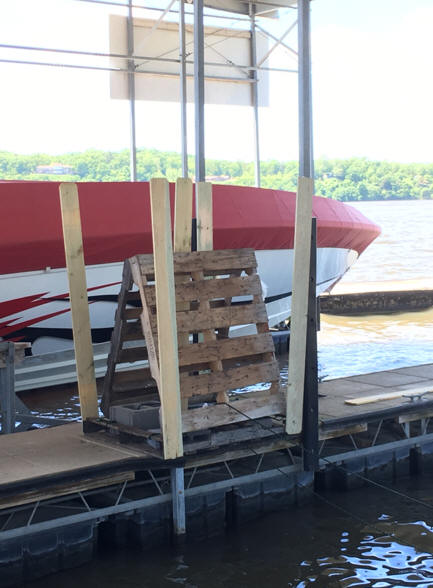
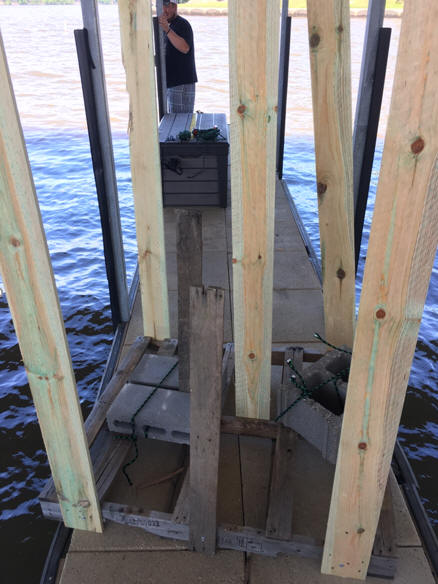
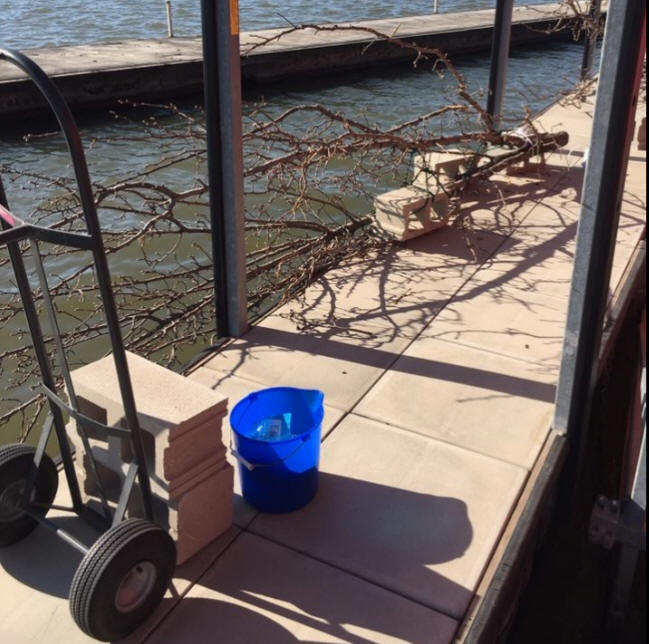
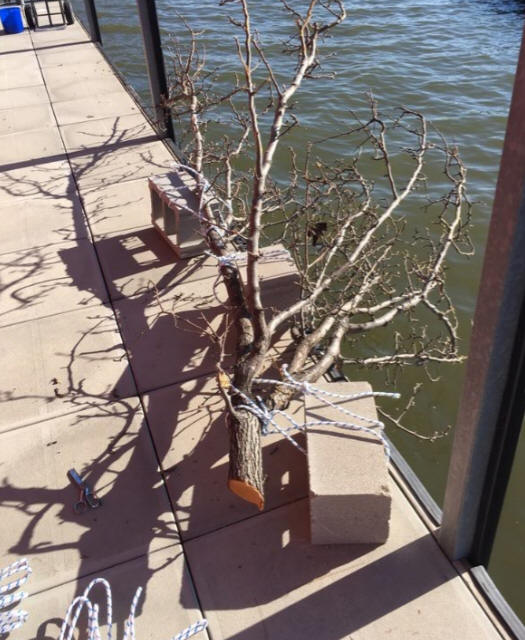
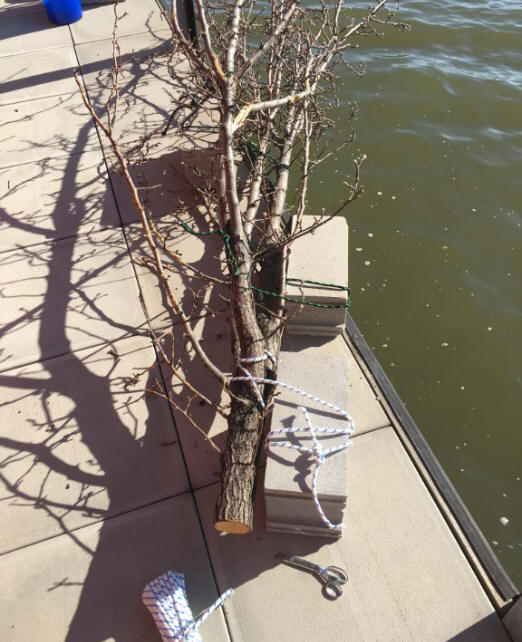

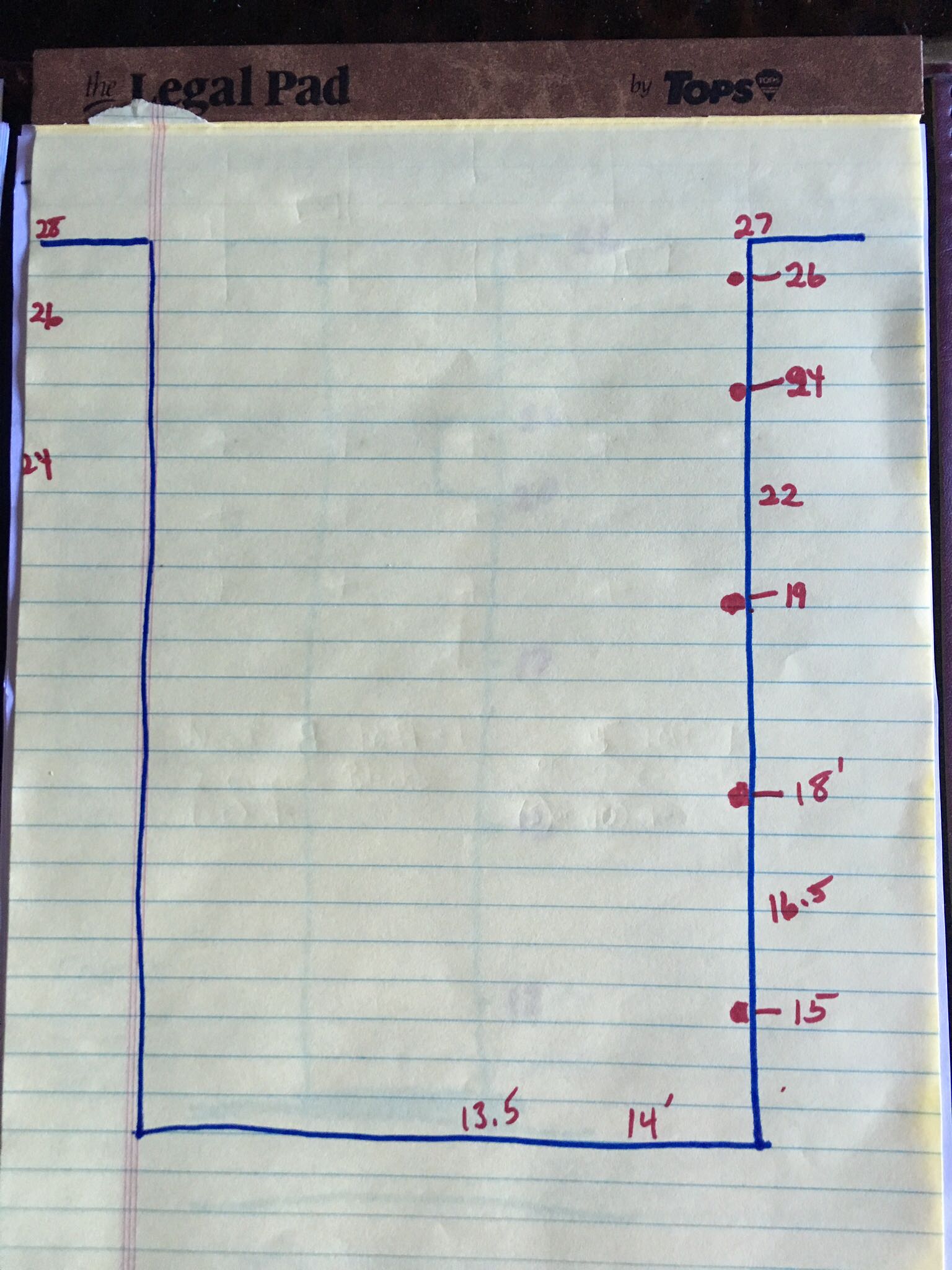

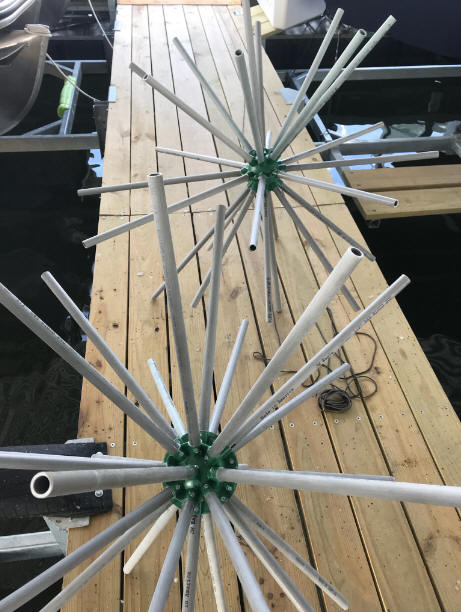
His pipe tree costs more (about $20 apiece) than the real thing, but Surbaugh believes it is worth the investment since the piece of cover seems to last indefinitely and is nearly undetectable by sonar. “It’s very hard to find. You have to know exactly where it’s at,” suggests Surbaugh. “It does not show up on a locator. If anything shows up at all it will look like one small vertical structure.” He believes once algae accumulates on the PVC, the trees start showing up as thin vertical lines on a depth finder but those lines are usually unrecognizable to other anglers.
The pipe trees offer two other advantages over brush piles. Surbaugh
suggest the manmade cover is deal for crappie fishing because jigs rarely hang
up on the PVC. “This method is also perfect for guys who don’t want to scratch
up their boat because the pipe will lie flat in the boat and all the other stuff
is already drilled and weighted beforehand,” he says.
Surbaugh’s tree consists of 10 1-inch pipes for the limbs, a 10-foot piece of
4-inch pipe for the trunk, a 2-foot section of 4-inch pipe weighted with
Quickrete for the bottom and a couple of 3-inch metal or self-threading wood
screws. Tools for this project include a hacksaw or band saw for cutting
the pipes and a power drill and 1 3/8-inch hole cutter.
The guide drills the screws into the 2-foot pieces of pipe and stands them in
his gravel driveway. Then he mixes the Quickrete and pours it into the pipes
where the cement hardens around the screws. The bases for seven or eight trees
can be made with one bag of Quickrete.
“Once you’ve got your bases poured you can have a tree ready to go in less than
10 minutes,” suggests Surbaugh. The next step is to drill the holes into the
trunk for the limbs. Surbaugh drills into the 4-inch pipe at an angle so when he
inserts the smaller pipe it wedges tighter to the trunk. He also drills a couple
of extra holes in the top of the tree which allows the main pipe to fill with
water and sink faster.
The local guide then loads all the pieces into his bass boat and heads for the
lake where final assembly is done. When he locates a good spot for planting,
Surbaugh then attaches the trunk to the base and daubs the connections with PVC
cement to keep it secured. Then he inserts the pipe limbs into the trunk and
cements them in place. “All you have to do then is grab the middle of the pipe
and drop it over the side so you don't have to mess with any concrete blocks or
rocks in your boat,” he says.
The guide plants his trees as either horizontal or vertical cover. “A lot of
times I’ll cut the limbs down into 10-foot sections, drill a hole in the top of
the trunk and hang a wire attached to a concrete block and lay the trees down
flat,” says Surbaugh. Since the limbs spread out about 5 feet on each side of
the tree, Surbaugh extends the wire on the anchor to about 6 feet to prevent the
weight from pulling down and smashing the bottom limbs. He usually drops
these trees in depths of 10 to 12 feet.
When he wants to sink the cover in deeper water, the guide constructs his trees
with the 20-foot pieces of pipe to create 10-foot limbs. Surbaugh attaches a
heavy plastic bottle near the top of the tree trunk so when the tree falls to
the bottom, the bottle floats up and keeps the cover erect.
The submerged pipe tree usually starts accumulating algae in about 10 days,
which is when the crappie also start hanging around the cover. Surbaugh has been
planting his pipe trees in Lake of the Ozarks for the last four years and
estimates he has 40 pieces of cover in the lake. The heavy fishing pressure and
boat traffic on this reservoir takes its toll on submerged brush piles after a
couple of years, yet Surbaugh has noticed his pipe trees remain intact.

